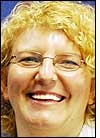The Australian government could soon bring the nation’s passive ultrahigh-frequency (UHF) RFID systems into line with international practices by upping the allowable power level of RFID devices to 4 watts.
In general, the Australian Communication and Media Authority (ACMA)—the government body responsible for regulating radio frequencies in that country—restricts the use of UHF RFID to 1 watt EIRP (effective isotropic radiated power). The majority of nations around the world limit RFID applications to 4 watts EIRP or 2 watts ERP (effective radiated power), which is equivalent to 3.2 watts EIRP.
In 2005, ACMA awarded GS1 Australia with a scientific license allowing the standards-setting organization to authorize and oversee licensing arrangements with Australian companies to test site-specific RFID systems operating between 920 and 926 MHz and at up to 4 watts (see Australia’s UHF Readers Get a Boost). In 2006 and 2007, it reissued that license (see ACMA Renews GS1 Australia’s UHF RFID License).
In July 2008, however, ACMA introduced restrictions when it renewed GS1 Australia’s four-watt scientific license, enabling only existing authorized users to continue with current applications. Other conditions of the renewed license include that these authorized third parties advise GS1 Australia of any changes to the parameters of existing test setups, and that suppliers, manufacturers or vendors of 4-watt RFID readers, antennas and transmitters not supply or add new equipment to current tests.
Despite the cutback on third-party licenses, Sue Schmid, GS1 Australia’s general manager of standards development, sees ACMA’s actions as a positive step for radio frequency identification in her country. “The goal of GS1 Australia,” she says, “was to facilitate changes to the Low Interference Potential Device (LIPD) regulations that would allow any company to operate an RFID system up to 4 watts without the need for a license.”
The purpose of the field trials was to test UHF EPC RFID systems at up to 4 watts in close proximity to GSM-based mobile phone systems, in order to alleviate ACMA concerns that RFID could potentially cause interference. Over the past 12 months, Schmid explains, GS1 Australia has overseen a number of tests aimed at easing concerns regarding such possible interference. One such test involved placing interrogators on a rooftop and pointing them at a nearby mobile phone base station.
“ACMA wanted us to gather data and scientific evidence, and we have done that,” Schmid says. “Now that ACMA has the data, it will examine the wording of licenses before going out to public review and, finally, to parliament for ratification. The restriction on new licenses is actually an indication that ACMA is moving beyond testing and on to the process of changing the regulations. The ball is now in ACMA’s court, but we are cautiously optimistic that changes will be made by the end of the year.”
The regulatory body indicates it is considering the results of trials involving 4-watt RFID devices, and that it expects to conclude the necessary consultation by the end of this year. Geoff McMillen, ACMA’s spectrum engineering manager, says it was vital to determine if RFID services had the potential to interfere with other radio communications services, particularly the mobile phone network operated by Vodafone throughout Australia.
“Typically, RFID devices are imported to Australia from the United States, where their spectrum use includes that used by Vodafone in Australia,” McMillen explains. “It is important that RFID devices do not operate in the part of the spectrum used by Vodafone.” In Australia, the company utilizes the 907-915 MHz frequency band, while 1-watt RFID devices operate at 918 MHz to 926 MHz. The United States, meanwhile, designates the 902-928 MHz band for various devices, including RFID equipment.
“ACMA’s operating principles include maximizing the overall public benefit from using the radio frequency spectrum,” McMillen states. “We are considering the results of trials of 4-watt devices to determine what action, if any, is required.”
Raising the RFID power limit to 4 watts, Schmid says, would align Australia’s regulations governing UHF RFID with those of most other nations. An increase in power, she adds, will also deliver a more robust RFID system, with greater read ranges for interrogators and more accurate tag-read rates.
While 1 watt is suitable for short-range applications, such as handheld devices, power of up to 4 watts is more geared toward RFID gateways and other applications requiring accurate reads at greater distances. Schmid hopes changes to the license conditions will increase the take-up of UHF RFID in Australia.
“Industry has been waiting for changes to the license conditions before going ahead with RFID tests,” Schmid says, “but ACMA needed some businesses to provide test data to make changes to the license—it is a little like the chicken and the egg. I don’t think the restriction on new licenses will affect current take-up, because the number of requests in the past 12 months [for third-party authorizations] has been on the low side. But once the barrier is removed, it could certainly increase activity. Many companies are investigating 4-watt UHF RFID and dipping their toes into the water, and hopefully that will continue once the license conditions are changed.”


